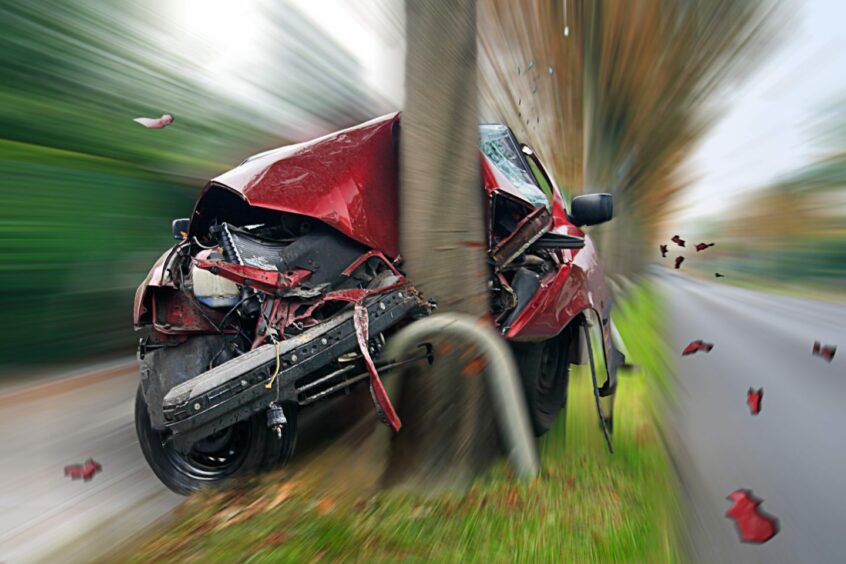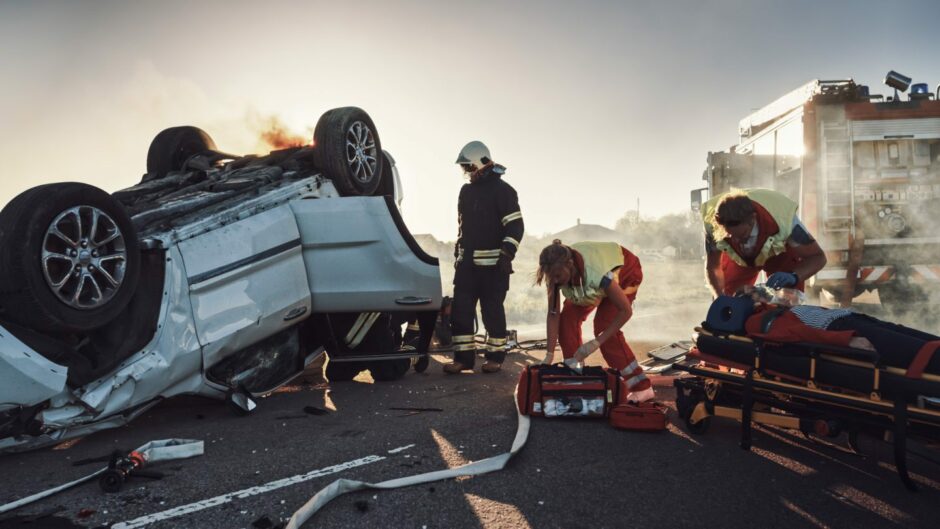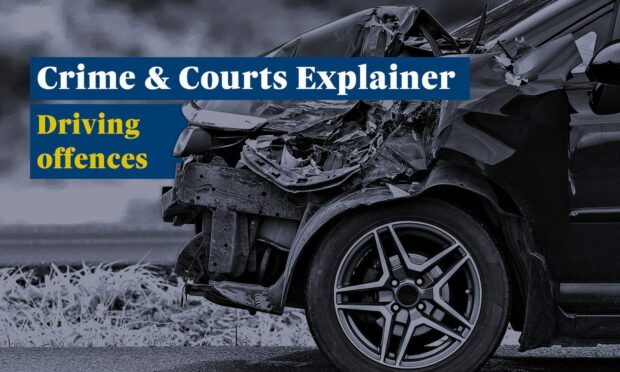One of the finest lines in the Scottish legal system is that between careless and dangerous driving.
While driving without due care and attention and driving dangerously might sound the same and have the same implications to the average person behind the wheel, the outcomes can be hugely different.
In court, it is not uncommon for accused persons to offer to plead guilty to careless driving when they are facing allegations of dangerous driving – or for sheriffs to reduce the charge in the same way.
But how much better off is a careless driver than a dangerous one?

At fault behind the wheel
Many of the driving errors which constitute offences can be found in both careless and dangerous driving charges.
Incidents such as colliding with another vehicle or stationary object could appear as either charge but there does not need to be a crash or any injury for driving to be dangerous.
Accordingly, many dangerous drivers can be left puzzled when they are handed harsher sentences for incidents which have left less of a mark than careless drivers.
It was a point made by Meigle man John Milne when he queried why he was hit with the greater charge for an apparently lesser offence than Sir Donald Miller in March. (Click the pic for the full story).
So what’s the difference?
Careless…
Section Three of the Road Traffic Act 1988 is fairly straightforward.
If a person drives a “mechanically propelled vehicle on a road or other public place without due care and attention, or without reasonable consideration for other persons using the road or place, he is guilty of an offence.”
A person is to be regarded as driving without due care and attention if – and only if – the way they drive “falls below what would be expected of a competent and careful driver.”
Any motorist is to be regarded as driving without reasonable consideration for other persons only if those persons are “inconvenienced” by their driving.
And dangerous?
Dangerous driving is outlined in Section 2 of the same act.
It defines the offence as being conduct which falls “far below” what would be expected of a competent and careful driver.
For driving to be dangerous, it has to be obvious to a competent and careful driver that driving in such a manner would be dangerous.

A person is also to be regarded as driving dangerously if it would be obvious to a competent and careful driver that driving the vehicle in its current state would be dangerous.
Dangerous refers to the risk either of injury to any person or of serious damage to property.
There is a further offence of causing serious injury by dangerous driving, which in Scotland is defined as being “severe physical injury.”
Better outcome?
Anybody convicted of driving dangerously will automatically lose their licence.
However, disqualification is not mandatory for careless drivers.
They may just have penalty points endorsed on their licence, along with a fine or other punishment.
Careless drivers could receive between three and nine points if convicted, which will stay on a driver’s licence for three years.
12 points on a licence, generally, and the game’s up though under the totting-up process – although not always.
Sometimes those charged with dangerous driving are found guilty of a lower charge, or will offer to plead to the reduction.
That’s because dangerous driving carries with it a much more severe potential punishment.
The minimum disqualification period is 12 months and an order to re-sit the extended driving test at the end of the ban.
There is no limit to how much dangerous drivers can be fined.
This doesn’t always mean eye-watering bills to foot.
However, there could also be two years behind bars imposed.
Careless driving can be prosecuted at both Justice of the Peace and Sheriff level, whereas dangerous driving is only prosecuted in Sheriff courts.
Just because a case is prosecuted at Justice of the Peace level does not mean there are no serious implications.
.
Killer drivers
Drivers who cause the death of another person can face a string of charges depending on circumstances.
Those who are charged with causing death by dangerous driving would face a jury if they pleaded not guilty.
These cases are prosecuted at Scotland’s High Courts.
Guidance
Releasing a Scottish Sentencing Council research report, David Harvie, Chair of the Council’s Death by Driving Committee “Death by driving offences are some of the most serious cases which come before the courts and are of significant public interest.”
The council said sentencing for these offences is “particularly complex and challenging,” in part because the culpability or blameworthiness of the driver can sometimes be very low in comparison with the great harm caused.
However, in some cases, people who are charged with and deny causing death by driving carelessly could have their trial call before a sheriff alone.
Further separate charges exist for causing death by driving without a licence or uninsured, while disqualified and while unfit through drink or drugs.
Causing death by driving dangerously could land motorists with a sentence of 14 years behind bars, as do intoxicated killer drivers.
Degree of criminality
The line between whether a death on the road is caused by careless driving or dangerous driving is measured in the same way as cases that do not involve fatalities.
This means not all killer drivers are dangerous and some are found not to be careless either.
However causing death by driving carelessly does not necessarily mean prison time at all.
If charged on indictment and a guilty verdict is returned by jurors, up to five years behind bars could be imposed.
A sheriff who convicts an accused alone would not be able to impose such a lengthy period in custody.
However, those sentencing are always encouraged to find alternatives to custody where it is appropriate and may turn to community-based disposals.
Typically and unsurprisingly, these tend to be at the highest end of the non-custodial sentences available.











